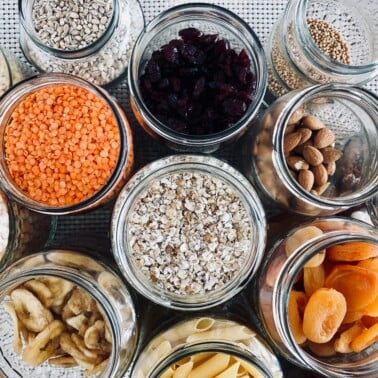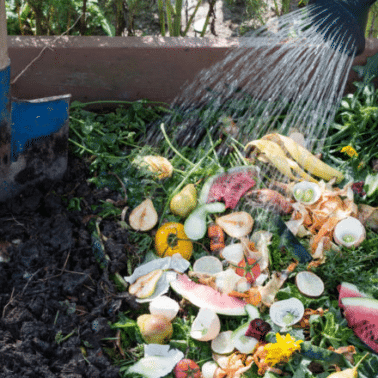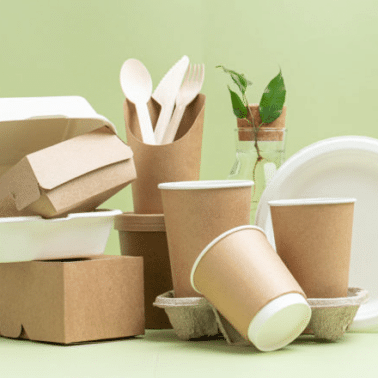If you’ve been following along in our sustainability series, you know that we’ve talked a lot about steps that we can take individually to lessen our carbon footprint and be better stewards of the earth. Now, it’s challenge time! Read on to learn about Plastic Free July and how you can participate.
What is Plastic Free July?
The Plastic Free Foundation, founded in Australia, created a month-long challenge called Plastic Free July in 2011 in an effort to work as a community to reduce plastic consumption over the challenge period.

How to Participate
Now, your mind might be running through all the things you touch daily in your house that are either made of plastic or packaged in plastic and think: there’s NO WAY could we do a whole month without plastic over here. BUT, I’ve got a tiered challenge for you, so that you can hopefully find even a small way to participate with us and reduce plastic waste for the next 31 days.
So, are you ready to go plastic-free?
Challenge level: Easy
Focus: to-go/takeout packaging (plastic straws, lids, cups, stir sticks, cutlery, boxes, bowls, bags).

In a fast-paced world, many of us opt for takeout/to-go options throughout the month, but is there a way you can make your weekly breakfast taco order plastic-free? Skip takeout drinks and bring your own water! Or, if you must get a drink, check to see if the restaurant offers cans or glass bottles. These are widely (and infinitely!) recyclable. If not, and you have to have a drink, can you go no straw or even no lid? Each piece of plastic we reduce this month is a huge win!
When I’m placing an order (or picking one up), I’ll often say “no bag please!” or just ask if they have a paper bag. After my food is out of the paper option, if it’s clean, I’ll reuse it for groceries. If it’s greasy or has food on it, I’ll compost it!
For to-go options after dining in a restaurant, you can bring your own container to bring leftovers home in. Some restaurants will pack your complete takeout order in your own jars or containers – you just have to ask! Of course, another option is to just reduce (or go without) takeout for the month of July, but as a mom of 3 little kids, I recognize that sometimes dinner plans just flop, and ordering out is what happens!
P.s. I’ve noticed that every coffee shop around me is doing drinks in your own cup again, so that’s a good place to start if you’re a regular coffee drinker.
Challenge level: Medium
Carry the takeout challenge from above – really stick the landing, though, and avoid all types of takeout plastics, PLUS grocery store-generated plastic. Think: plastic shopping bags, produce bags, pre-bagged produce, single-serve packaged snacks and drinks, and bakery items. Oof.
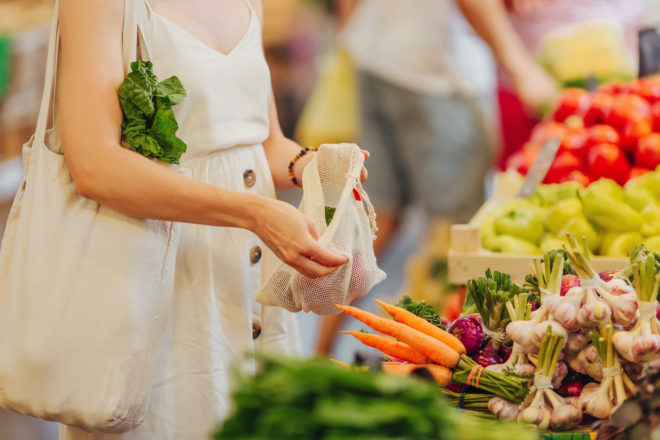
Ok, here’s where things get tricky, but I’ll pass along what I’ve learned over the past few years:
- Bags – from what I’ve seen from friends living in other cities, there are a few grocery stores that will bring out your curbside order in boxes and transfer them to your car without grocery store plastic bags. That’s not the case where I shop, so for July, I’m going to commit to in-person shopping with my own tote bags. If you don’t have enough reusable grocery bags, I’ll give a secondary challenge: to find something you already own to tote those sweet potatoes home in versus buying a new bag at the store. Birthday gift bags, your beach tote, or even a weekender duffel bag will all carry groceries even if that wasn’t their original purpose, I promise.
- Produce Bags – most produce doesn’t even need to get bagged! Just toss it in the cart, then go on to checkout. It’s no big deal. I do bag things like loose green beans, or if I happen to buy a ton of little potatoes, bulk mushrooms, things like that. I have some cloth reusable produce bags for those and have had them for four years. They’re all still in GREAT condition. Beware the brands of these that are actually made from plastic – you’ll want cotton here! (option for a link to bags for y’all?)
- Pre-bagged Produce – this is like your pre-washed salads, pre-cut fruits/vegetables, or even bags of apples, lemons, potatoes, etc. Pretty much every store I’ve shopped at has these same items in bulk, unpackaged, really near to the pre-packaged stuff! It might be a little more work in terms of washing and chopping your own salad greens, but it’s worth it!
- Snacks and Drinks – oh how we love our snacks and special drinks! For some reason, parents have been marketed that the only snacks for kids are snacks that are packaged in little portioned bags straight from the manufacturer. Is there a way to find a bulk version of whatever snack you or your kiddos like and portion them out at home? For your favorite snack bar, I’m betting there is a copycat recipe online that can be made from common bulk aisle ingredients! For drinks, can you DIY the version of what you like that’s bottled in plastic, find a glass or aluminum packaged version, or maybe go without for a bit? I know this is where it starts to get hard because the line between needs and wants get a bit blurred. For example, with kids, we think they *need* pouches or special bars, but it turns out when other options are exhausted, they’ll often happily munch on whatever’s around.
- Bread – as much as I would like to be an expert baker, I’m just not – I promise I tried sourdough along with everyone else in 2020 and it just didn’t turn out. If you can bake your own, though, hat tip to you! If not, I haven’t tried to get grocery store bakery items into my own cloth bag, but you can always ask! Our local farmers’ market does have some folks who sell loaves of sourdough for take home in your own container or a paper bag. These loaves are huge and often last us longer than the bagged counterpart from the store.
Challenge Level: Hard
In the words of Ciara: level up. Do everything in the above challenges, AND let’s add in anything and everything that comes with plastic packaging of any kind. We’re talking plastic shrink wrap on the outside of the box, styrofoam on the inside – ALL of it. This is TOUGH, and this is where getting crafty is the answer.
I like to look for second-hand options for these items. Say I’m looking for a new toaster (I really am), I’ll look on Facebook Marketplace and search the radius around us and around my parents, just in case there’s one closer to them. This works best for items you don’t immediately NEED. Our toaster oven broke two months ago, so we’ve just been using the regular oven until we can find exactly what we want and need for the right price! This could also be where you start considering fabric materials for clothes and textiles in your home and avoiding synthetics (made from plastic). It’s hard to do for active clothing, but for daily wear clothes, sticking to natural fibers is a great way to reduce plastic coming into your home, and, of course, avoiding new clothes that come packaged in individual, non-recyclable plastic bags.
Challenge Level: Super Hard (You’ve got this!)
Everything above, plus mason jar trash cans and no plastic parts.
I’ll venture to say this one is near impossible to carry on for a lifetime, but for one month, why not try? Unfortunately, plastic is a part of many items we use in our everyday lives, but this super challenge level is more a mental battle of true needs (and maybe a research battle of finding alternatives made with less or no plastic). Package Free Shop is a great place to shop for little swaps.
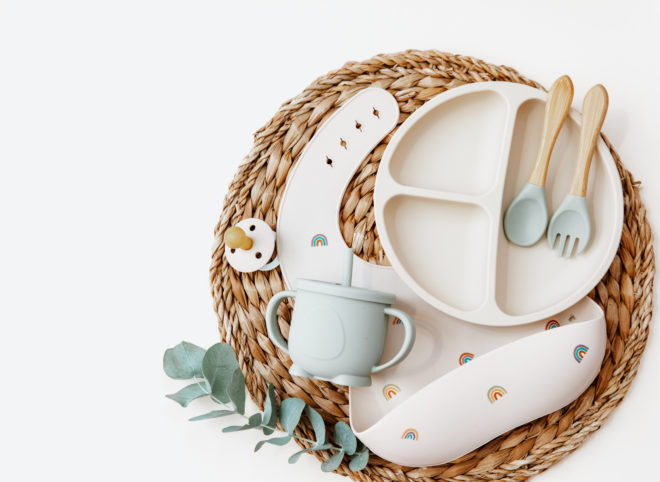
Maybe your toddler needs some mealtime things – plates, forks, spoons, cups? Most of what is on supermarket shelves is either fully made of plastic or at least has plastic components. Did you know, though, that there are bamboo and silicone options for plates and utensils? Stainless steel and silicone cups that are not only better for the environment but also last longer, hold up against the dishwasher, and don’t have any of the health concerns of their plastic counterparts, like leaching chemicals into food and drink.
When replacing household items, search for ones made of natural materials. For example, when we moved and needed a second toilet brush, I got one with a wooden handle and natural fibers that can be composted for end of life. Out of shampoo? Seek out a brand packaged in aluminum, one that does refills, or even try a shampoo bar! Many kitchen and bathroom items we’re used to seeing on store shelves in plastic packaging do have package-free alternatives these days – we just have to seek them out!
There are lots of swaps we can make to have less plastic touches. The Plastic Free July challenge is a fun jump start and I think the continuation for me is doing a search each time I run out of a product, just to see if there’s a better packaged (or unpackaged) item out there! You’d be surprised what you can find just by searching “plastic free…xyz”!
What do you think? Are you ready to join the challenge? Click HERE to learn more about Plastic Free July. Click HERE to take the Pesky Plastics Quiz. Click HERE to join the Challenge.
Just for You
Sustainability Articles
Want to broaden your knowledge of sustainability?
